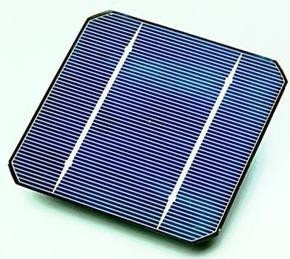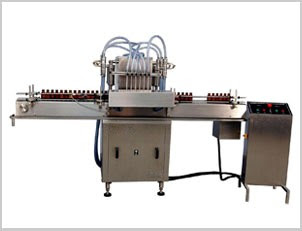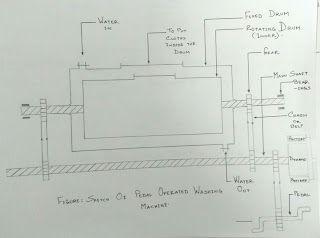A brief description of Disc Brake
Trickling down from the motocross world, disc brakes have
now become popular on off-road bicycles. Discs provide powerful and reliable
braking in all types of weather and terrain so they're ideal for trail riding.
Plus, unlike rim brakes, discs aren't compromised should you hit a hole or land
hard and bend your wheel.
There are significant differences between discs and rim brakes, however. So
here we provide an overview of how discs work, the different types, and basic
maintenance instructions.
Disc brakes generate
amazing stopping power even in the worst conditions because they utilize rotors
(photo) attached to the wheel hubs, and calipers attached to the frame
containing specially designed pads (also called "brake shoes").
Unlike the soft rubber pads used on rim brakes, discs use hard metallic- or
ceramic-based pads that are less affected by water, mud and heat .
Figure Disc Brake
DISC BRAKE
A disc brake is a type of brake that
uses calipers to squeeze pairs of pads against a disc in
order to create friction that retards the rotation of a shaft, such as a
vehicle axle, either to reduce its rotational speed or to hold it stationary.
The energy of motion is converted into waste heat which must be dispersed.
History of the Disc Brake
Ever
since the invention of the wheel, if there has been "go" there has
been a need for "whoa." As the level of technology of human
transportation has increased, the mechanical devices used to slow down and stop
vehicles has also become more complex. In this report I will discuss the
history of vehicular braking technology and possible future developments.
Before there was a "horse-less carriage," wagons, and other animal
drawn vehicles relied on the animal’s power to both accelerate and decelerate
the vehicle. Eventually there was the development of supplemental braking
systems consisting of a hand lever to push a wooden friction pad directly
against the metal tread of the wheels. In wet conditions these crude brakes
would lose any effectiveness.
The early years of automotive development were an interesting time for the designing engineers, "a period of innovation when there was no established practice and virtually all ideas were new ones and worth trying. Quite rapidly, however, the design of many components stabilized in concept and so it was with brakes; the majority of vehicles soon adopted drum brakes, each consisting of two shoes which could be expanded inside a drum."
The early years of automotive development were an interesting time for the designing engineers, "a period of innovation when there was no established practice and virtually all ideas were new ones and worth trying. Quite rapidly, however, the design of many components stabilized in concept and so it was with brakes; the majority of vehicles soon adopted drum brakes, each consisting of two shoes which could be expanded inside a drum."
In this chaotic era is the first record of the
disk brake. Dr. F.W. Lanchester patented a design for a disk brake in 1902 in
England. It was incorporated into the Lanchester car produced between 1906
through 1914. These early disk brakes were not as effective at stopping as the
contemporary drum brakes of that time and were soon forgotten. Another
important development occurred in the 1920’s when drum brakes were used at all
four wheels instead of a single brake to halt only the back axle and wheels
such as on the Ford model T. The disk brake was again utilized during World War
II in the landing gear of aircraft. The aircraft disk brake system was adapted
for use in automotive applications, first in racing in 1952, then in production
automobiles in 1956. United States auto manufacturers did not start to
incorporate disk brakes in lower priced non-high-performance cars until the
late 1960’s.
Advantages of Disc brake over the Drum brake
As with almost any artifact of
technology, drum brakes and disk brakes both have advantages and disadvantages.
Drum brakes still have the edge in cheaper cost and lower complexity. This is
why most cars built today use disk brakes in front but drum brakes in the back
wheels, four wheel disks being an extra cost option or shouted as a high
performance feature. Since the weight shift of a decelerating car puts most of
the load on the front wheels, the usage of disk brakes on only the front wheels
is accepted manufacturing practice.
Drum brakes had another advantage compared to early disk brake systems. The
geometry of the brake shoes inside the drums can be designed for a mechanical
self-boosting action. The rotation of the brake drum will push a leading shoe
brake pad into pressing harder against the drum. Early disk brake systems
required an outside mechanical brake booster such as a vacuum assist or
hydraulic pump to generate the pressure for primitive friction materials to
apply the necessary braking force.
All friction braking technology uses the process of converting the kinetic
energy of a vehicle’s forward motion into thermal energy: heat. The enemy of
all braking systems is excessive heat. Drums are inferior to disks in
dissipating excessive heat:
"The common automotive drum brake consists essentially of two shoes which
may be expanded against the inner cylindrical surface of a drum.
The greater part of heat generated when a brake is applied has to pass through
the drum to its outer surface in order to be dissipated to atmosphere, and at
the same time (the drum is) subject to quite severe stresses due to the
distortion induced by the opposed shoes acting inside the open ended drum.
The conventional disk brake, on the
other hand, consists essentially of a flat disk on either side of which are
friction pads; equal and opposite forces may be applied to these pads to press
their working surfaces into contact with the braking path of the disks. The
heat produced by the conversion of energy is dissipated directly from the
surfaces at which it is generated and the deflection of the braking path of the
disk is very small so that the stressing of the material is not so severe as
with the drum."
The result of overheated brakes is
brake fade...the same amount of force at the pedal no longer provides the same
amount of stopping power. The high heat decreases the relative coefficient of
friction between the friction material and the drum or disk. Drum brakes also
suffer another setback when overheating: The inside radii of the drum expands,
the brake shoe outside radii no longer matches, and the actual contact surface
is decreased.
Another advantage of disk brakes over drum brakes is that of weight. There are
two different areas where minimizing weight is important. The first is unsprung
weight. This is the total amount of weight of all the moving components of a
car between the road and the suspension mounting points on the car’s frame.
Auto designs have gone to such
lengths to reduce unsprung weight that some, such as the E-type Jaguar, moved
the rear brakes inboard, next to the differential, connected to the drive
shafts instead of on the rear wheel hubs. The second "weighty" factor
is more of an issue on motorcycles: gyroscopic weight. The heavier the wheel
unit, the more gyroscopic resistance to changing direction. Thus the bike’s
steering would be higher effort with heavier drum brakes than with lighter
disks. Modern race car disk brakes have hollow internal vents, cross drilling
and other weight saving and cooling features.
Most early brake drums and disks were made out of cast iron. Current OEM
motorcycle disk brakes are usually stainless steel for corrosion resistance,
but after-market racing component brake disks are still made from cast iron for
the improved friction qualities. Other exotic materials have been used in
racing applications. Carbon fiber composite disks gripped by carbon fiber pads
were common in formula one motorcycles and cars in the early 1990’s, but were
outlawed by the respective racing sanctioning organizations due to sometimes
spectacular failure. The carbon/carbon brakes also only worked properly at the
very high temperatures of racing conditions and would not get hot enough to
work in street applications.
A recent Ducati concept show bike uses brake disks of silesium, developed by the
Russian aerospace industry, which claim to have the friction coefficient of
cast iron with the light weight of carbon .
Common Material Used for Manufacturing the Disc Brake
For
cars, the most commonly used disc material is cast iron, because of its good
friction properties, low cost, relative ease of manufacture and thermal
stability.
Aluminium metal matrix composites (AMMC) with SiC
reinforcement is considered as a possible alternative to cast iron discs for
cars mainly because of the significant reduction possible in the weight of the
disc. However, it is costlier than cast iron, and is yet to be produced
reliably in a large scale in mass production.
For motorcycles, stainless steel (SUS 410) is the most
commonly used material. This material has reasonably good corrosion resistance,
and can be induction hardened to increase the hardness for providing good wear
resistance.
Racing motorcycles use carbon
fibre discs. Since this material requires high temperature to achieve the
desired friction level, it cannot be used for normal motorcycles.
The Working of Disc Brake
A disc brake has a disc
that turns with the wheel. The disc is straddled by a caliper, in which
there are small hydraulic pistons worked by pressure from the master cylinder.The pistons press on friction pads that
clamp against the disc from each side to slow or stop it. The pads are shaped
to cover a broad sector of the disc.There may be more than a
single pair of pistons, especially in dual-circuit brakes.The pistons move only a
tiny distance to apply the brakes, and the pads barely clear the disc when the
brakes are released. They have no return springs.When the brake is applied, fluid
pressure forces the pads against the disc. With the brake off, both pads barely
clear the disc.Rubber sealing rings
round the pistons are designed to let the pistons slip forward gradually as the
pads wear down, so that the tiny gap remains constant and the brakes do not
need adjustment.Many later cars have
wear sensors leads embedded in the pads. When the pads are nearly
worn out, the leads are exposed and short-circuited by the metal disc,
illuminating a warning light on the instrument panel.
Figure :The working of the Disc Brake
For More Inforation
Email dibakarkarmokar2@gmail.com





Fibre Disc are used to grinding curved surfaces of metal. We use this tool prior to painting, polishing, and finishing a product. We use Fibre Disc, after welding or connecting products, we only apply them to dry products. There is a lot of Fibre Disc Manufacturers in India but AbrasiveOnline is the top class Fibre Disc Manufacturers.
ReplyDeleteA Brief Description Of Disc Brake >>>>> Download Now
ReplyDelete>>>>> Download Full
A Brief Description Of Disc Brake >>>>> Download LINK
>>>>> Download Now
A Brief Description Of Disc Brake >>>>> Download Full
>>>>> Download LINK Rb